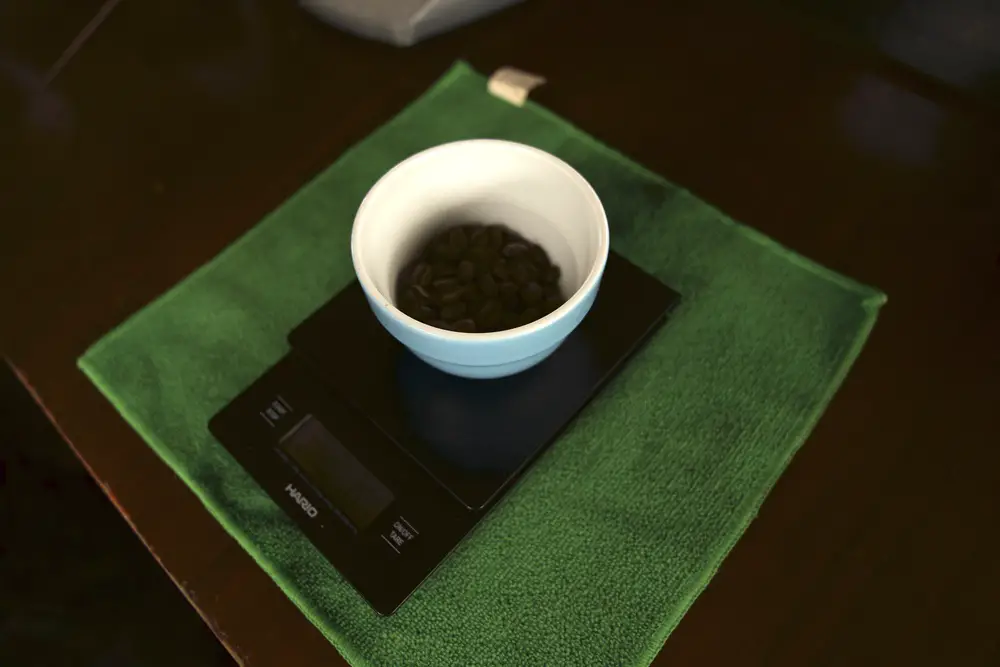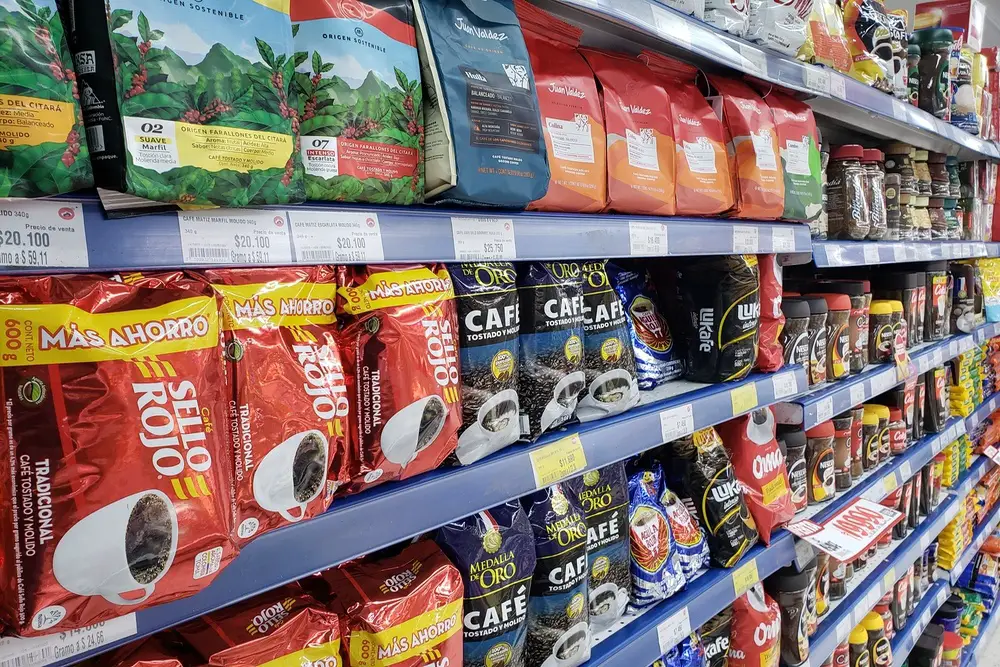In recent years, people have become more concerned about the origin and various processes of food. Therefore, in this article, we are going to talk about fermentation and how it affects the taste and quality of coffee.
Table of Contents
What is fermentation?
Fermentation is nothing more than a biochemical process in which microorganisms such as yeast and various types of bacteria convert organic chemical compounds.
These microorganisms feed mainly on organic substrates with a high sugar content and then produce enzymes that break down complex substrates such as starch, fructose and pectin.
The aim of this process is to control the microorganisms in order to change or maintain the texture of the food.
In addition, acids or alcohols are said to be formed, which allow the development of other aromas and flavors that increase the nutritional value and quality of the product.
Summarized:
- Fermentation is a process of taking a substrate, putting a microorganism on it and creating a completely different product with different properties than the original substrate.
Types of fermentation
The following are the different types of fermentation:
Alcoholic fermentation
This is a process for the production of alcoholic beverages. This fermentation is generally performed by yeast and bacteria, which break down carbohydrates found in grains and fruits to subsequently produce ethanol, alcohol and carbon dioxide.
Lactic Acid Fermentation
Lactic acid fermentation is carried out by Lactobacillaceae and Enterobacteriaceae bacteria, but also by fungi. This type of fermentation is often used for food preservation.
Malolactic fermentation
Malic acids are converted into lactic acids. It is usually carried out on fruit and also in the production of some red and white wines. Malolactic fermentation gives white wines a sour and fresh taste.
Acetic acid fermentation
This type of fermentation requires oxygen and is carried out by aerobic bacteria, which convert ethyl alcohol into acetic acid, the substance responsible for vinegar’s aroma and flavor.
Butyric acid fermentation
This is the conversion of glucose into butyric acid and gas. It is carried out by certain bacteria in the complete absence of oxygen and is characterized by the appearance of unpleasant odors.
Propionic Acid Fermentation
This process involves succinic acid, lactic acid and carbon dioxide. It is carried out by anaerobic sporogenic bacteria of the genus Propionibacterium.
Fermentation in coffee
Regarding coffee, it can be said that fermentation has become an important issue for manufacturers. This process can greatly improve the flavor of a coffee, but it can also ruin it if not done properly.
Therefore, you should keep in mind that coffee fermentation is all about getting a clean cup, free from unwanted ferments or aromas.
In this sense, the main function of fermentation is to loosen the mucilage from the coffee so that it can be easily washed. As a reminder: coffee slime is the gelatinous layer that envelops the coffee bean after sterilization.
When the slime goes in the dryer with the beans, it can create unwanted ferments like vinegar or rancid beans, which eventually show up in the cup of coffee.
However, if you get a clean cup, you have a high percentage of very good quality coffee, which can even become a specialty coffee that is among the best quality on the market.
How does fermentation affect coffee quality?
Coffee lovers are looking for new taste experiences every day. It is precisely at this point that the fermentation process is of great importance, since it allows to obtain different flavors. The aim is to attract the consumer’s attention and increase the quality of the product. However, incorrect fermentation can spoil the taste.
For this reason, growers have been interested in fermenting coffee for a number of years. This allows new flavors to reach more people, which in turn means better prices in different markets.
Finally, it must not be forgotten that fermentation cannot improve the quality of the drink if the quality of the harvest is poor.
How is coffee fermented?
It is important to know that post-harvest fermentation of coffee can be done in two ways:
Aerobic fermentation
This technique is simple and consists of leaving the freshly picked cherries in a container or tank to allow the microorganisms to do their work on their own.
In aerobic fermentation, the variables cannot be controlled because the presence of oxygen does not allow the various variables to be controlled.
It is common for this fermentation process to produce coffee with fruity, sweet, and sometimes chocolate flavors.
Anaerobic fermentation
In this process, the coffee cherries are placed in barrels or barrels and then water is added at a ratio of 30% to the coffee mass.
After that, the barrels are sealed to prevent oxygen from entering the barrels. This gives rise to bacteria that only exist in this type of environment and that have the task of decomposing matter. This creates a coffee with very special aromas such as citrus fruits or intense fruits.
It is important to know that the alcohols produced during anaerobic fermentation must be stopped in good time, otherwise they form acetic acid and the coffee can take on an unpleasant taste as a result.
Flavors such as vanilla, hazelnut, floral and sometimes earthy flavors can be achieved with this fermentation system.
Coffee fermentation time
Experts recommend setting a fixed time for the fermentation of the coffee. In this way, the formation of acidic flavors in the drink can be controlled and a good quality coffee for mass consumption can be produced.
In this regard, it should be mentioned that the minimum fermentation time may vary depending on the climate. Therefore, it is important that you consider the following aspects when conducting a fermentation process with coffee:
- In hot climates, it takes about 12 hours before the coffee can be washed and dried in the sun.
- It takes longer in cold climates, usually between 16 and 18 hours.
- After 42 hours, you are likely to receive cups with imperfections such as a sour or rancid taste.
- If the fermentation time is increased, 14 to 18 different cup profiles can be obtained from one batch of coffee.
Continuous and discontinuous fermentation
In the fermentation process, the frequency of fermentation is also considered. There are two options here:
- The first is batch or static fermentation, where the process begins and ends with each batch of coffee. This type of fermentation is the most common among coffee producers.
- Continuous fermentation does not interrupt the fermentation process, so new batches of coffee are constantly entering the tanks. Therefore, 3 systems are required for continuous fermentation:
Continuous recirculation system: This system maintains the consistency of the coffee mass.
Oxygen Delivery System: Allows the aerobic microorganisms to stay alive.
Periodic Microorganism Replenishment System: Maintains active populations.
This second method is more likely to be used in large companies as it requires more organization.
Fermaestro device
The Fermaestro is a device that allows you to determine the right time to wash the coffee beans. This device is in the form of a metal cone with 6mm holes on the sides through which the slime exits and the granules remain inside.
Variables to consider in coffee fermentation
Strict monitoring is required to minimize errors that may occur during the fermentation process. Therefore, it is important to consider the following variables that can be monitored throughout the fermentation process:
Physic-chemical measurements
We recommend measuring the pH and Brix level of the coffee grounds at the beginning and end of the fermentation process.
Moisture content of the beans
It is important to ensure the beans have a certain moisture level when they are ready for storage.
If care is not taken in this area, this can lead to a significant drop in the price of coffee. It is therefore recommended that the moisture content does not exceed 12.5%.
Adequate conditions in the fermentation area
It is recommended to maintain strict hygiene protocols in the tanks used during the fermentation of the coffee to avoid unnecessary exposure of the coffee to environmental factors that could affect it.
Temperature
Extreme temperature fluctuations can affect the coffee mass and thus affect the fermentation process. The use of air conditioning and cooling devices is recommended.
Quality of the fruit
It is recommended to select the ripest berries, i.e. at least 80% of the total cherries harvested. These berries are ideal because they have a higher mucilage content. Also, these berries need to be cleaned before starting the fermentation process.
Quality of the water
The water used to wash the coffee must be safe to drink, free of heavy metals, enterobacteria and dissolved solids, and have a pH between 6 and 8. Rainwater cannot be used because it has low mineral content.
Washing control
With each washing process, the coffee mass must be stirred to remove impurities. Depending on the type of cup to be obtained and the fermentation method used, washing must be carried out a maximum of four times.
If you want to get coffee with an intense taste, before drying the coffee, it is advisable to wash it gently 1 or 2 times. On the other hand, if you want to get coffee with milder aromas, you should do 4 gentle washes.
Drying control
Drying coffee beans requires an optimal environment free from smoke and emissions. It is also advisable to dry the coffee beans separately and in batches.
Conclusion
Coffee fermentation is a very interesting process to increase quality. However, the processes are complex and also involve a certain risk. Undoubtedly, the world of coffee requires ingenuity, temperament and precision to stand out.




